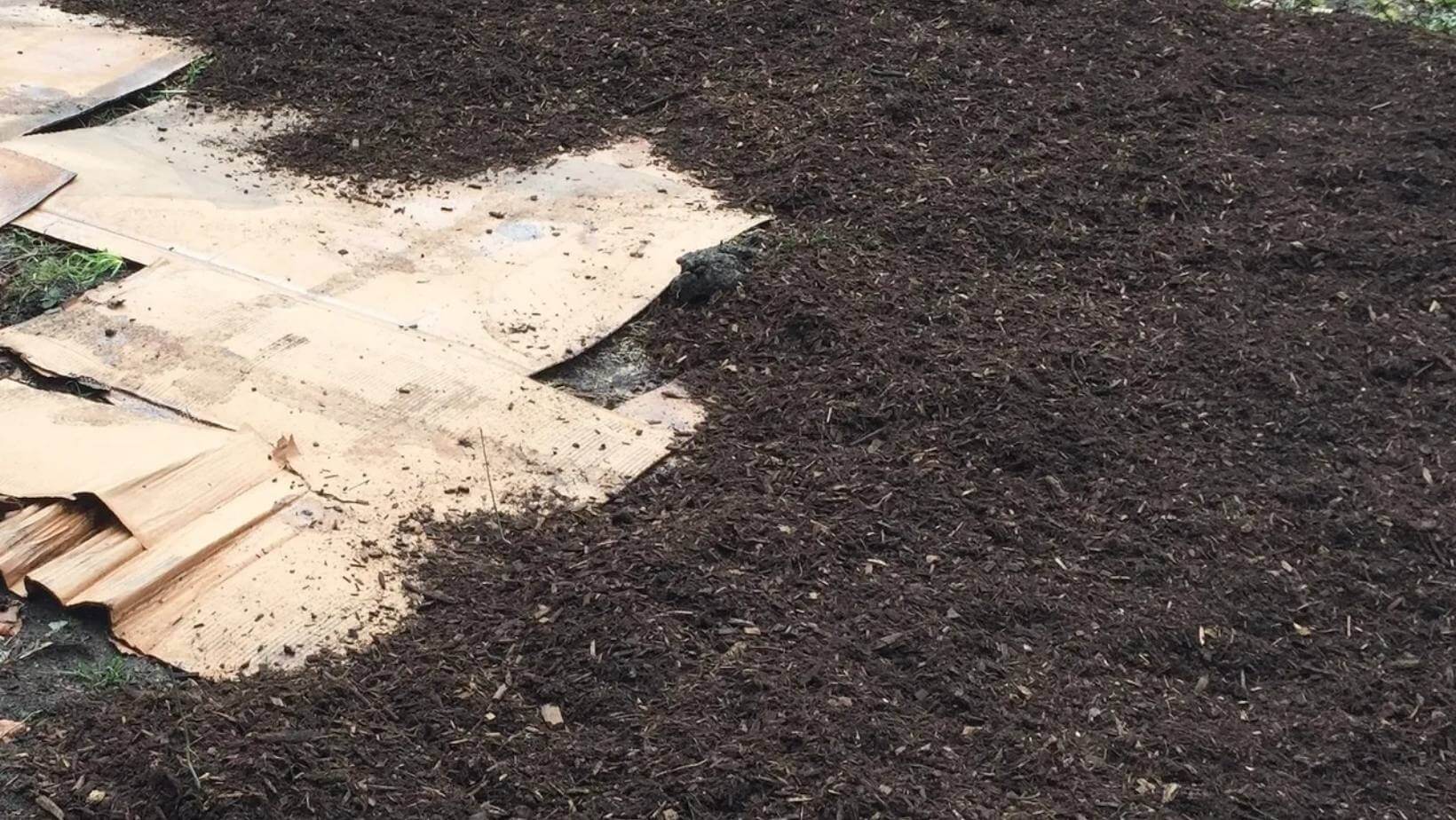
Adding mulch to your yard can transform both the look and functionality of your outdoor space.
Taking on a DIY landscaping project involving mulch can be daunting, though, with the tasks of ripping up grass, tilling and loosening the soil, fertilizing it and more – but it doesn’t have to be! Mulch can be added without any of the digging and tearing up your lawn, just cover it up.
Sheet mulching is a type of mulching where composting is used to repurpose the lawn and add nutrients for new plants, without in-depth landscaping work. You can use cardboard, compost, and quality, recycled mulch for this project for a quicker, healthy environment for your plants and a visually-transformed lawn or garden.
What you need for Sheet Mulching
Composting uses nutrients from natural decomposition of organic material to feed new growth and create a healthy environment for plants. Sheet mulching is a type of composting, and works in the same way. When sheet mulching, composting is used to cover existing grass with more organic materials, which will create nutrient-rich soil as they decompose.
To get started, you’ll need:
- Cardboard boxes, or rolls of recycled cardboard or newspaper
- Green compost (wood chips, leaves, plant clippings, hay)
- A water source (such as a hose)
- Organic, recycled mulch
How to sheet mulch your yard
When you get started on your sheet mulching project, remove any dead bushes or plants in your yard. Even ground is best for laying the cardboard to get started. Remember – save any organic material you remove! It can be used in your composting.
Once your ground is prepped, wet the grass evenly and thoroughly. Then, lay down your cardboard or newspaper layer. Be sure to remove any stickers, tape, or other inorganic materials that could be left on your cardboard or newspaper!
Overlap each piece of cardboard by at least six inches to keep grass or weeds from poking through. Once your cardboard layer is spread across your sheet mulching area, thoroughly wet the cardboard. Once the cardboard is soaked evenly through, add your layer of organic compost on top of the cardboard. The compost layer should be at least 2 inches thick and cover the cardboard completely.
Now your yard or garden area is ready for plants! Add baby plants to the compost layer, and as they grow their roots will poke right through the cardboard. The compost will do its job and add nutrients to the soil as it continues to decompose, creating a rich environment for your plants to thrive.
On top of the compost, add a layer of organic, recycled mulch to help create a moist environment for your plants to thrive. APE mulches are 100 percent recycled, and all colors are kid and pet safe – and also safe for your plants! Mulch should be layered 3-4 inches thick. Find out just how much mulch you will need for your lawn or garden beds by checking out our mulch calculator!
